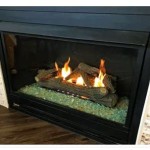Family Room With Fireplace And TV Decorating Ideas
The family room, often the heart of the home, serves as a versatile space for relaxation, entertainment, and connection. Integrating a fireplace and a television into this space presents both opportunities and challenges in achieving a cohesive and aesthetically pleasing design. Strategically combining these two focal points requires careful consideration of layout, style, and technology to create a functional and inviting environment. The following provides insight into various decorating ideas for a family room featuring both a fireplace and a television.
Balancing Focal Points
One of the primary considerations when designing a family room with a fireplace and a television is how to balance these two dominant focal points. Both elements naturally draw the eye, and if not handled properly, they can compete for attention, creating a visually disjointed space. The goal is to create harmony and a sense of equilibrium.
One approach is to position the fireplace and television on adjacent walls, forming an L-shaped arrangement. This configuration allows for a natural eye movement from one feature to the other without forcing a direct comparison. The key is to ensure that the seating arrangement facilitates comfortable viewing of both. For example, a sectional sofa could be placed in the corner of the L, providing ample seating that is oriented towards both the fireplace and the television.
Another option is to place the television above the fireplace, which is a common solution, particularly in smaller spaces where maximizing floor space is essential. However, this arrangement requires careful execution. The television should be mounted at a comfortable viewing height to prevent neck strain. This often means that the television should not be positioned too high above the mantel. Additionally, heat management becomes a crucial factor. A proper mantel shelf can deflect heat away from the television, and it might be necessary to install a heat shield to further protect the electronic components. Selecting a low-profile electric fireplace can also mitigate heat-related concerns compared to a traditional wood-burning fireplace.
Alternatively, the fireplace and television can be placed on the same wall, but with a deliberate offset. This can be achieved by creating built-in shelving units that flank the fireplace, with the television positioned to one side within the shelving. This arrangement provides visual balance while also offering practical storage solutions. The shelving can be used to display decorative items, books, or media equipment, further integrating the two focal points into a unified design.
Consider the architectural style of the room. Is it modern, traditional, rustic, or eclectic? The style will influence the materials, colors, and overall design aesthetic. For a modern space, a sleek, linear fireplace with a minimalist design pairs well with a large, flat-screen television. In a more traditional setting, a classic brick or stone fireplace with a decorative mantel can be complemented by a television concealed behind artwork or within a custom-built cabinet.
Color plays a significant role in balancing the focal points. A cohesive color palette throughout the room can unify the different elements. Neutral colors, such as grays, beiges, and whites, create a calming backdrop that allows the fireplace and television to stand out without overwhelming the space. Pops of color can be introduced through accent pieces, such as throw pillows, rugs, and artwork, to add visual interest and tie the design together.
Lighting is another essential element. Ambient lighting, such as recessed lights or sconces, can create a warm and inviting atmosphere. Task lighting, such as floor lamps or table lamps, can provide focused illumination for reading or other activities. Dimmable lighting allows for adjustments to the brightness, creating the desired ambiance for different occasions, whether it’s a cozy night by the fire or a movie night with family.
Optimizing Functionality and Comfort
Beyond aesthetics, it is crucial to optimize the functionality and comfort of the family room. This involves considering the seating arrangement, acoustics, and technological integration.
The seating arrangement should be designed to accommodate the needs of the household. A large sectional sofa is ideal for families who enjoy gathering together for movie nights or game nights. Individual armchairs or loveseats can be added to provide additional seating options. The placement of the seating should allow for comfortable viewing of both the fireplace and the television, without requiring occupants to strain their necks or compromise their posture.
Acoustics are often overlooked, but they are essential for creating a comfortable and enjoyable environment, especially when a television is involved. Hard surfaces, such as hardwood floors and bare walls, can reflect sound, creating echoes and making it difficult to hear clearly. Soft surfaces, such as rugs, curtains, and upholstered furniture, can absorb sound, reducing echoes and improving the overall acoustics of the room. Soundproofing materials can also be used to further enhance the acoustics, particularly in rooms with high ceilings or large windows.
Technological integration is another important consideration. Cable management is essential for keeping the family room tidy and organized. Wires and cables should be concealed as much as possible, using cable conduits, wall plates, or furniture with built-in cable management systems. Wireless technology can also help to minimize clutter and improve the overall aesthetic.
Consider incorporating smart home technology to enhance the functionality and convenience of the family room. Smart lighting systems allow for control of the lighting from a smartphone or tablet, enabling the creation of customized lighting scenes for different activities. Smart thermostats can be used to regulate the temperature, ensuring a comfortable environment at all times. Smart entertainment systems can be integrated to provide seamless access to streaming services, music, and other media.
Storage is an important aspect of functionality. Built-in shelving units, cabinets, and media consoles can provide ample storage for media equipment, games, books, and other items. Storage solutions should be designed to complement the overall aesthetic of the room, using materials and finishes that coordinate with the fireplace and television.
Consider adding personal touches to make the family room feel unique and inviting. Displaying family photos, artwork, or collectibles can add personality and create a sense of warmth and connection. Plants can also add a touch of nature and freshness to the space.
The rug selection can significantly impact the overall feel of the family room. A large area rug can anchor the seating area and define the space. Choose a rug that complements the color palette and style of the room. Soft, plush rugs can add warmth and comfort underfoot, while durable, stain-resistant rugs are ideal for high-traffic areas.
Enhancing Aesthetic Appeal
The aesthetic appeal of the family room can be enhanced through careful selection of materials, textures, and decorative elements. The goal is to create a space that is visually appealing, comfortable, and reflective of the occupants' personal style.
The fireplace can be a significant design feature, and the selection of materials plays a crucial role in its aesthetic impact. Brick, stone, tile, and wood are all popular choices, each offering a different look and feel. Brick fireplaces evoke a sense of warmth and tradition, while stone fireplaces can add a rustic or contemporary touch. Tile fireplaces offer a wide range of design options, from classic subway tiles to intricate mosaic patterns. Wood fireplaces can be crafted from various types of wood, each with its unique grain and color.
The mantel is another opportunity to enhance the aesthetic appeal of the fireplace. A decorative mantel can serve as a focal point, adding visual interest and providing a space for displaying decorative items. Mantels can be made from wood, stone, or metal, and they can be customized to match the style of the room.
The television can be integrated into the design in a variety of ways. As previously mentioned, concealing the television behind artwork or within a custom-built cabinet is one option. Another approach is to choose a television with a sleek, minimalist design that blends seamlessly into the surroundings. Some televisions are designed to resemble artwork when they are not in use, further minimizing their visual impact.
Textures play a significant role in adding visual interest and depth to the family room. Incorporate a variety of textures through the use of different materials, such as velvet, linen, leather, and wood. Throw pillows, blankets, and curtains can also add texture and warmth to the space.
Artwork can be used to add personality and visual interest to the family room. Choose artwork that complements the color palette and style of the room. A large statement piece can serve as a focal point, while smaller pieces can be used to create a gallery wall.
Plants can add a touch of nature and freshness to the space. Choose plants that thrive in indoor environments and that complement the overall design aesthetic. Consider using a variety of plant sizes and shapes to create visual interest.
Accessories can be used to add the finishing touches to the family room. Choose accessories that reflect your personal style and that complement the overall design aesthetic. Candles, vases, and decorative objects can add warmth and personality to the space.
Window treatments play a crucial role in controlling light and privacy. Choose window treatments that complement the style of the room and that provide the desired level of light control. Curtains, blinds, and shades are all popular options.
Consider the scale and proportion of the furniture and accessories in relation to the size of the room. Avoid overcrowding the space with too much furniture or accessories. Choose pieces that are appropriately sized for the room and that allow for comfortable movement.
By carefully considering these design elements, a family room with a fireplace and a television can be transformed into a cohesive, functional, and aesthetically pleasing space that serves as the heart of the home.

Top 15 Small Living Room With Fireplace And Tv Decorating Ideas Furniture Layout Corner Comfy Decor

Outfits Magic Toptrendpin Club Trendy Living Rooms Room With Fireplace Built Ins

Family Room Design How Can We Have Our Cake And Eat It Too Janet Brooks

How To Arrange Living Room Furniture With A Tv And Fireplace
Interior Designers Reveal The Mistakes You Re Making In A Living Room

19 Stunning Rustic Living Rooms With Charming Stone Fireplace Room Design Family Farm House

Mantel Decorating With A Tv 10 Ideas And Tips Nina Hendrick

35 Fireplace Ideas With Tv Above For A Cozy View Nikki S Plate

Fireplace Design Ideas For Your Home Designcafe
7 Inspirational Living Room Layout Ideas Heat Glo
Related Posts








